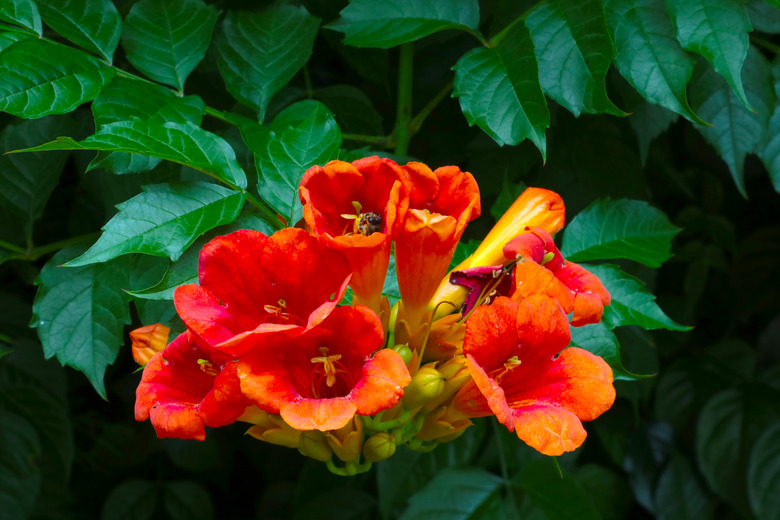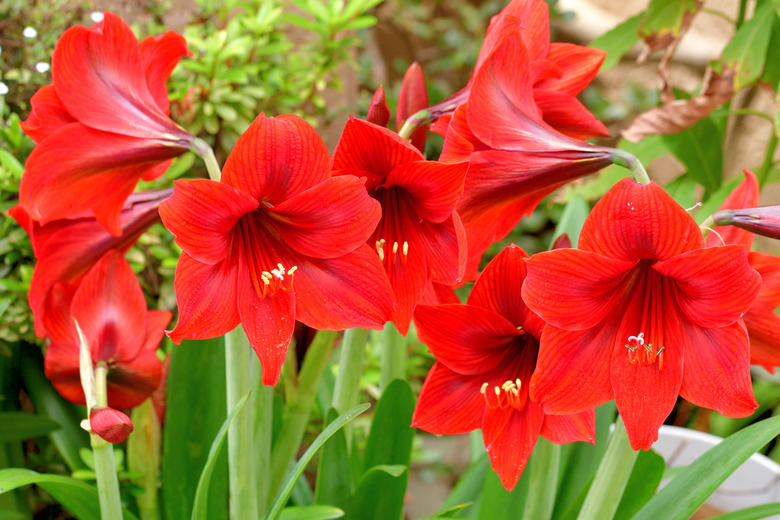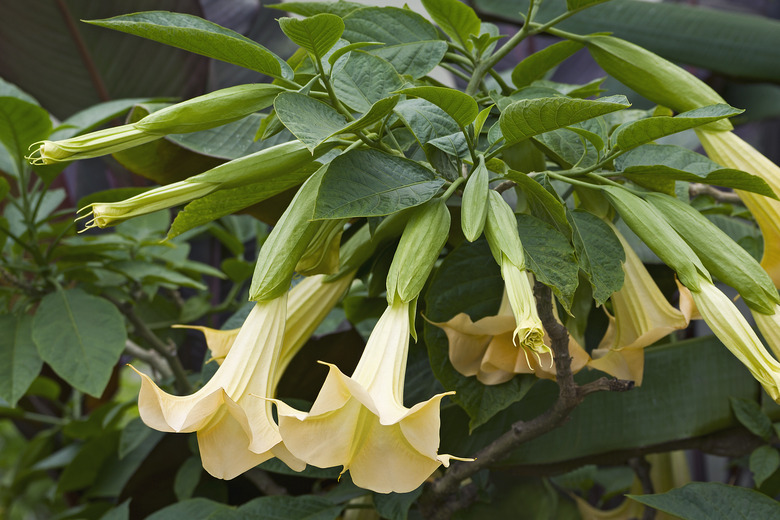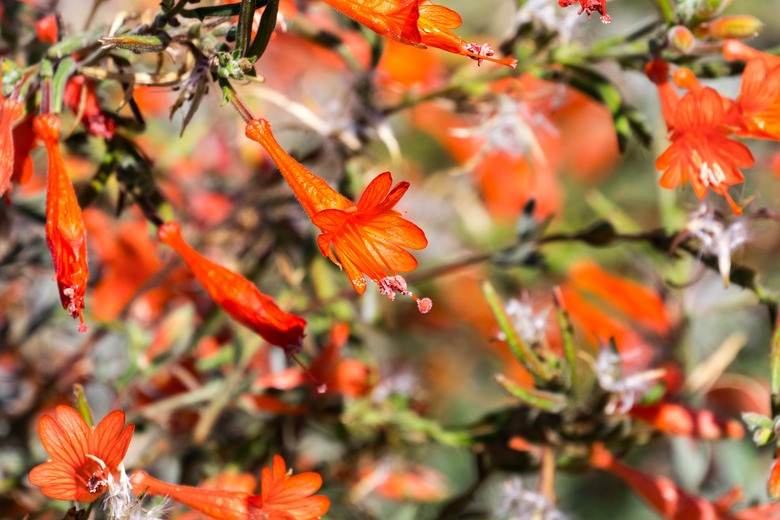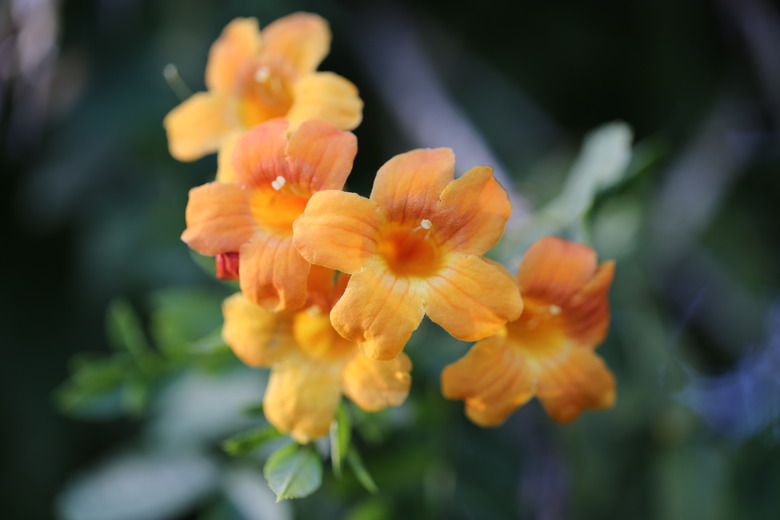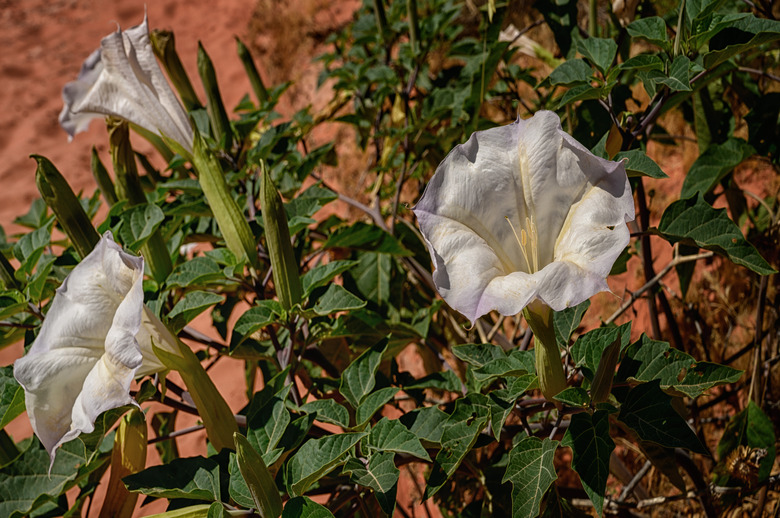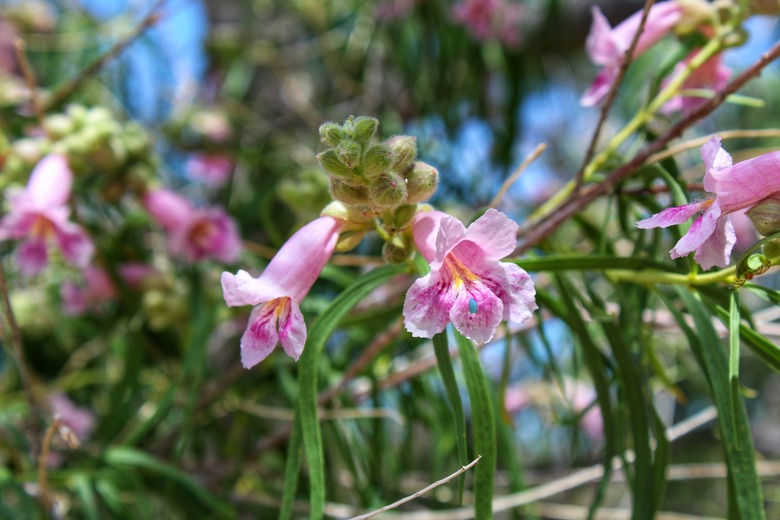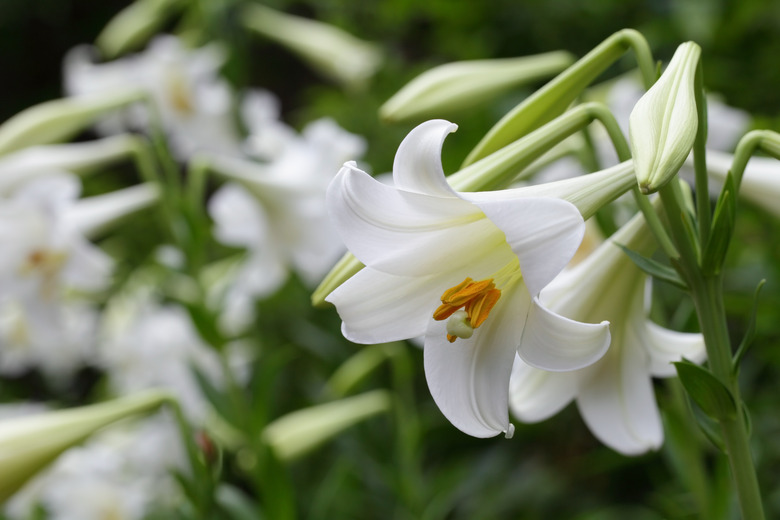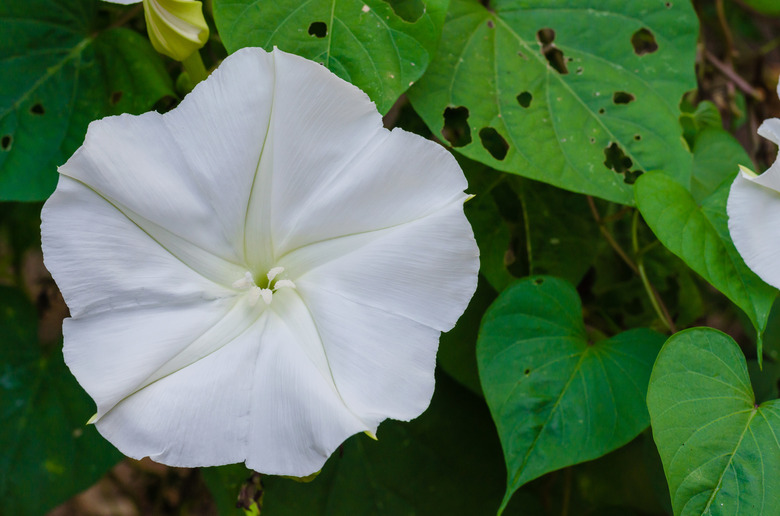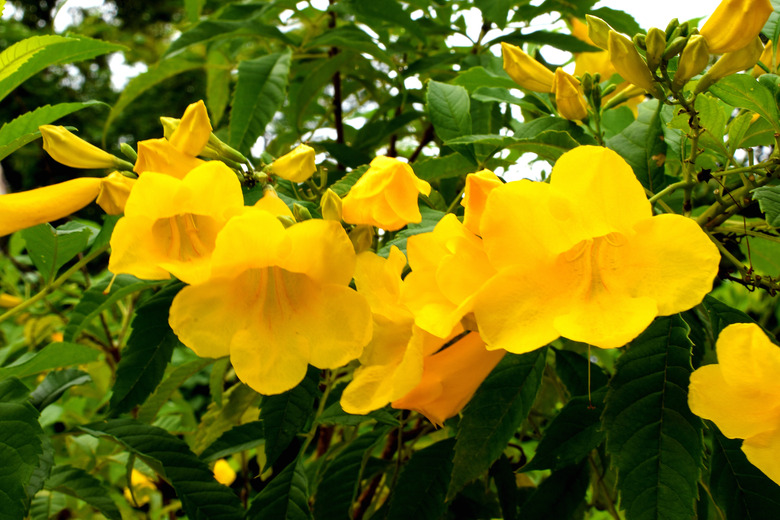10 Flowers That Look Like Trumpets
We may receive a commission on purchases made from links.
One of the most popular ways to decorate your yard is with a bountiful variety of colorful flowers. Not only do flowers create a beautiful landscape, but they also help the ecosystem and attract wildlife, like birds and helpful pollinators. One popular flower shape to plant in your yard is trumpet-shaped flowers. There's a variety of species and colors of trumpet-shaped flowers to fit in almost any garden.
1. Amaryllis
1. Amaryllis
You may be familiar with amaryllis (Hippeastrum spp.) during the holiday season, but they're also a popular flower among gardeners and landscapers in tropical and subtropical climates. Besides their beautiful color and trumpetlike shape, they're a hardy flower that doesn't require constant attention. The most common flower colors include red, bright pink, and orange, but you can also find them in shades of pink and white. The amaryllis should be planted in a lightly shaded space, not in direct sunlight.
2. Angel's Trumpet
2. Angel's Trumpet
Angel's trumpet (Brugmansia spp.) is a perennial plant that originated in South America. Angel's trumpet blooms in the summer and can handle a small amount of frost. It does best when planted in indirect sunlight with lots of space to grow. This plant requires lots of attention and frequent fertilization. Though it is resistant to deer and its fragrance attracts pollinating moths, it's highly toxic. The leaves, flowers, and seeds are poisonous to humans if eaten in high quantities. The plant's leaves are often an oval shape, and the flower colors include gold, yellow, pink, and white.
3. California Fuchsia
3. California Fuchsia
If you live in or have been to California, there's a good chance you've seen the native California fuchsia (Epilobium canum). They're found throughout California on dry slopes and ridges in the summer and fall. These perennials are primarily red and orange but can also be pink or white. They attract hummingbirds, butterflies, and birds as well. These flowers like dry climates and direct or partial sunlight.
4. Crossvine
4. Crossvine
Crossvine (Bignonia capreolata), sometimes called trumpet flower, is a tropical-looking plant native to the Southeast region of the United States. It can grow in soil and up trees and fences. It tends to bloom toward the end of winter and the beginning of spring and attracts pollinators. If you plant crossvine in your yard, be aware that deer often use it as a food source. Its flowers are usually gold, yellow, red, or orange and are highly fragrant. Native Americans used crossvine for medicinal purposes, but it's known for being highly flammable, so it's best not to plant it right next to your house.
5. Datura
5. Datura
Daturas (Datura spp.) are a member of the tomato family with eight or nine different species. These plants come in various sizes depending on the space and climate and require much room to grow. This plant with trumpetlike flowers blooms in colors of white, pink, purple, golden yellow, or red-purple. Datura's fragrance is similar to that of honeysuckle, which tends to attract spin moths. They tend to bloom from summer until the first frost in fall.
6. Desert Willow
6. Desert Willow
The desert willow (Chilopsis linearis) isn't actually a willow but instead is a member of the creeping trumpet family. It's naturally found in warmer climates, like the Southwestern and Western regions of the United States, and flourishes in direct sunlight. It usually grows as a shrub or small tree and can withstand long periods without water, making it a popular landscape choice in dry climates. The flowers are often white with a purple tint and exude a delightful fragrance.
7. Easter Lily
7. Easter Lily
The Easter lily (Lilium wallichianum) is a large, trumpet-shaped flower often seen in spring. While many Easter lilies are sold as indoor potted plants, they can be planted in gardens when cold weather has subsided. Easter lilies prefer bright but indirect sunlight and do best with temperatures between 60 to 65 degrees Fahrenheit. While these flowers are beautiful and delightfully fragrant, they are highly toxic to cats, so keep them out of the reach of your feline friends.
8. Moonflower
8. Moonflower
Moonflower or moonvine (Ipomoea alba) is an annual flower that needs to grow on a fence, trellis, or tree. Its beautiful white trumpetlike flowers open at night and exude a beautifully sweet fragrance. Both moths and bees are attracted to the moonflower, making it an excellent addition to pollinator gardens. Moonflower is known for having a long bloom season, which starts in the summer and ends in the spring, and requires little maintenance. This vine prefers warm weather and tends to flourish and grow quickly in a hot, wet environment.
9. Trumpet Daffodil
9. Trumpet Daffodil
Not many things signify spring more than daffodils in bloom. Trumpet daffodils (Narcissus pseudnarcissus) are perennial flowers that bloom in early spring and can handle wet, dry, and warm climates. They're resistant to pests and diseases but can be dangerous to dogs, cats, and horses. While they are not aromatic, their trumpet-shaped flowers come in beautiful shades of yellow and white.
10. Yellow Bells
10. Yellow Bells
Yellow bells or esperanza (Tecoma stans) are deciduous shrubs native to the southwestern region of the U.S. and Mexico. The plant reaches heights of 3 to 9 feet depending on its location. These perennial flowers are trumpet-shaped and bright yellow, and they bloom from spring through fall. They're naturally found in Texas and Arizona down to Central and South America. They need either direct or indirect sunlight and do not require much watering. They're also known for attracting butterflies and hummingbirds.
